Unlocking the Game: Pickleball Paddle Guide 101 for New Players
Introduction
The fastest-growing sport in America! In recent years, this dynamic and engaging sport has captured the hearts of millions, combining elements of tennis, badminton, and ping-pong into a unique and accessible game. Played on a court smaller than a tennis court, with a net slightly lower, pickleball offers a perfect blend of physical activity, strategic gameplay, and social interaction, making it appealing to enthusiasts of all ages and skill levels.
The surge in popularity of pickleball can be attributed to its inclusive nature and the minimal equipment required to play. However, while the game may seem simple at first glance, the choice of equipment, especially the pickleball paddle, plays a pivotal role in how you play and enjoy the game. A proper pickleball paddle guide is essential for beginners to navigate through the vast array of options available and make an informed decision that best suits their playing style and goals.
Choosing the right pickleball paddle is not just about picking the one with the best reviews or the most appealing design. It involves understanding the paddle’s materials, weight, size, and grip, all of which can significantly impact your performance on the court. Whether you’re aiming to improve your game, compete at a higher level, or simply enjoy the social aspects of pickleball, the right paddle can make all the difference.
As we delve deeper into the world of pickleball, this guide will serve as your comprehensive resource for not only selecting the perfect paddle but also understanding the rules, strategies, and nuances of the game. From mastering the pickleball rally scoring rules to knowing the dimensions of the court and the significance of the kitchen zone, this guide has you covered. Let’s embark on this journey together, exploring the essentials of pickleball and ensuring you’re well-equipped to join the ranks of enthusiasts across the country.
Understanding Pickleball
A Brief History and Current Popularity
Pickleball’s origin story is as unique as the game itself, tracing back to a sunny day in 1965 on Bainbridge Island, Washington. Created by three friends—Joel Pritchard, Bill Bell, and Barney McCallum—as a way to entertain their families, the game has evolved from a backyard pastime to an internationally recognized sport. Named either after the Pritchards’ dog, Pickles, who loved to chase the balls, or the term “pickle boat,” referring to the last boat to return with its catch, the true origin of the name remains a playful debate among enthusiasts.
Today, pickleball’s popularity is undeniable, with millions of players across the United States and beyond. Its appeal lies in its accessibility and simplicity, attracting a diverse group of players, from children to seniors. The sport has seen exponential growth in recent years, with communities, parks, and recreation centers embracing pickleball by setting up dedicated courts to meet the rising demand.
Pickleball Rules: Scoring and Singles Play
Pickleball is played on a court with dimensions similar to a badminton court, 20 feet wide by 44 feet long, and can be played in singles or doubles format. One of the distinctive features of pickleball is its scoring system, known as rally scoring, which allows points to be scored by the serving side only. Matches are typically played to 11, 15, or 21 points, and the winning side must lead by at least two points.
In rally scoring, the server continues to serve, alternating service courts, until they commit a fault. This rule adds a strategic layer to the game, emphasizing the importance of a strong service game and the ability to maintain serve. Singles play follows similar rules, with the server serving from the right-hand court when their score is even and from the left when it is odd.
The Kitchen: Court Dimensions and Gameplay Areas
A distinctive aspect of pickleball is the non-volley zone, colloquially known as “the kitchen.” This area extends 7 feet from the net on both sides and is a crucial part of the court. Players are prohibited from performing volleys—that is, hitting the ball in the air—while standing in the kitchen. This rule prevents players from dominating the net and ensures a balanced, strategic game. Understanding and respecting the kitchen’s boundaries is essential for both beginners and seasoned players.
Community and Culture
The pickleball community is renowned for its welcoming and inclusive nature. From local clubs to international tournaments, the sport fosters a sense of belonging and camaraderie among players. “Pickleball phrases” like “nice kitchen play” or “good rally” are common, enhancing the social experience of the game.
Being part of the “pickleball zone” means more than just playing; it’s about joining a community that values health, social interaction, and friendly competition. Whether you’re looking to compete, stay active, or simply enjoy the company of others, pickleball offers something for everyone. The sport’s culture is one of its greatest assets, inviting players to not only engage in the game but also contribute to its vibrant, growing community.
The Equipment – A Pickleball Paddle Guide
Selecting the right equipment is a pivotal step for any pickleball player, from beginners to seasoned pros. The paddle, in particular, is not just a tool but an extension of the player, influencing every hit, serve, and volley. This section provides a detailed guide on what to consider when choosing a pickleball paddle, ensuring it complements your gameplay and enhances your performance on the court.
What to Look For in a Pickleball Paddle
Choosing a pickleball paddle goes beyond aesthetics. Here are key factors to consider:
Weight: Paddles range from light (under 7.3 ounces) to heavy (over 8.5 ounces). Lighter paddles offer better control and are easier on the arm, while heavier paddles provide more power but can lead to quicker fatigue.
Material: Paddles are made from wood, composite, or graphite. Wood is durable and cost-effective but heavier. Composite paddles are a middle ground, offering a good balance between weight and power. Graphite paddles are lightweight and provide excellent touch and control.
Size: The paddle’s surface area affects its control and power. A larger face offers more hitting area but can reduce maneuverability. Balance your need for reach and control when choosing.
Grip Size: Comfortable grip is crucial. Your grip size influences control and can prevent injuries. Measure from the middle crease of your palm to the tip of your ring finger to find your ideal grip size.
Types of Pickleball Paddles: Materials, Sizes, and Weights
Wooden Paddles: The original paddle material, wood, is an affordable option for beginners but is generally heavier, which can affect response time and speed.
Composite Paddles: Made from a blend of materials like fiberglass and polymer, composite paddles are versatile, offering a wide range of weights and playing characteristics. They are known for their durability and the ability to customize surface textures for spin.
Graphite Paddles: The premium choice for many players, graphite paddles are lightweight with a stiff face, allowing for precise shots and quick reactions. They tend to be more expensive but are favored for their performance attributes.
Choosing a Paddle Based on Play Style and Skill Level
Beginners: If you’re new to pickleball, a lighter composite paddle with a larger surface area is recommended. It offers ease of use, control, and the ability to learn different shots without the strain of a heavy paddle.
Intermediate to Advanced Players: More experienced players might opt for graphite paddles that provide better precision and speed. A heavier paddle can also be advantageous for those looking to add power to their game.
Play Style: Consider whether you prefer a power-oriented game or one based on control and finesse. Power players benefit from heavier paddles, while control players should look for lighter options with larger sweet spots.
3 Person Pickleball Dynamics: In scenarios where you’re playing doubles with a rotating third player (common in casual play and practice), choosing a versatile paddle that suits all players’ styles can be beneficial. A mid-weight composite paddle offers a good balance between control and power, accommodating varying skill levels and play styles within the group.
Ultimately, the choice of a pickleball paddle is a personal one, influenced by your physical attributes, play style, and the level of competition you’re engaged in. Testing different paddles, if possible, can provide invaluable insight into what works best for you, ensuring your paddle is a true partner on the court.
Common Mistakes and How to Avoid Them
Embarking on your pickleball journey is an exciting endeavor, but it’s not without its pitfalls. Beginners, in their enthusiasm, can fall into common traps that may hinder their progress and enjoyment of the game. Recognizing and addressing these “pickleball mistakes” early on can significantly improve your experience and performance. Here, we outline some typical errors made by newcomers, particularly in choosing a paddle and during gameplay, along with strategies to avoid them.
Paddle Selection Mistakes
Choosing the Wrong Weight: Beginners often overlook the importance of paddle weight, which can dramatically affect play. A paddle that’s too heavy can lead to arm fatigue and slower reaction times, while one that’s too light might not provide enough power. Tip: Start with a mid-weight paddle (around 7.3 to 8.4 ounces) to find a balance between power and control as you learn your preferences.
Ignoring Grip Size: Playing with a paddle that has an unsuitable grip size can lead to discomfort and even injuries over time. Tip: Measure your grip size by measuring from the middle crease of your palm to the tip of your ring finger or use the height index (your height in inches correlates to a recommended grip size) as a general guide.
Focusing Too Much on Brand or Price: It’s easy to assume that the most expensive paddle or the brand your friend recommends is the right choice for you. Tip: Focus on how a paddle feels in your hand and matches your play style over brand prestige or price tag.
Gameplay Mistakes
Overlooking the Importance of Footwork: Beginners often focus so much on the upper body that they neglect their footwork, leading to poor positioning and missed shots. Tip: Practice moving your feet as much as your arms. Good positioning is key to reaching the ball and making effective shots.
Neglecting the Non-Volley Zone: The area known as “the kitchen” can be both a strategic advantage and a pitfall. New players might volley from within the kitchen or step into it after a volley, both of which are faults. Tip: Be conscious of your position relative to the kitchen and practice shots that allow you to stay clear of this zone unless you’re hitting a ball that has bounced.
Hitting Too Hard: It’s a common misconception that power is paramount. Many beginners hit the ball too hard, sacrificing control and strategy. Tip: Focus on placing your shots and using a variety of soft and hard hits. Dink shots (soft shots played into the opponent’s kitchen) can be especially effective.
Underutilizing the Serve: A serve in pickleball is not just about putting the ball into play; it’s an opportunity to start the point with an advantage. Beginners often use a conservative serve for fear of faulting. Tip: Experiment with different serving techniques, such as varying the depth and spin, to challenge your opponents right from the start.
General Tips
Practice Makes Perfect: Regular practice is the most effective way to overcome mistakes. Spend time working on your weaknesses, whether it’s serving, volleying, or positioning.
Stay Patient and Positive: Progress takes time, and pickleball is no exception. Stay patient with yourself as you learn and maintain a positive attitude.
Seek Feedback: Playing with more experienced players and asking for their feedback can provide insights into areas of your game that need improvement.
Avoiding these common mistakes requires mindfulness and practice. By focusing on the fundamentals of paddle selection and gameplay, you’ll set yourself up for a more enjoyable and successful pickleball journey.
Playing the Game – Rules and Scoring
Pickleball combines elements of tennis, badminton, and ping-pong, creating a unique and engaging sport that’s easy to learn but challenging to master. A crucial aspect of mastering pickleball is understanding its rules and scoring system, which dictate how the game is played and won. This section delves into the nuances of pickleball rally scoring, the game’s objectives, and the differences between singles and doubles play.
Understanding Pickleball Rally Scoring and Rules
Rally scoring in pickleball is a system where points can be scored by the serving team only. This scoring method keeps the game fast-paced and competitive, as both teams vie for the opportunity to serve and score. The basic principles of rally scoring in pickleball include:
Serving Sequence: The game starts with the serve made diagonally across the court. The server continues to serve, switching sides each time they win a point, until they commit a fault.
Scoring Points: Points are awarded to the serving team when the opposing team fails to return the ball, commits a fault, or violates rules such as hitting the ball out of bounds.
Winning the Game: Games are typically played to 11 points and must be won by at least a 2-point margin. In tournament play, matches may be played to 15 or 21 points, also requiring a 2-point lead to win.
The Game’s Objectives and Scoring Systems
The primary objective in pickleball is to win points by outmaneuvering your opponent, forcing them to commit errors or fail to return the ball. Strategic shot placement, effective use of the non-volley zone (kitchen), and skillful serving are key to gaining and maintaining the advantage.
Starting the Point: The serve must be made underhand with the paddle below the waist, and the ball must land in the opposite diagonal service box.
Double Bounce Rule: After the serve, each side must let the ball bounce once before volleys are allowed. This rule adds a layer of strategy to the beginning of each point.
Faults: Faults occur for various reasons, such as hitting the ball out of bounds, not clearing the net, volleying in the kitchen, or stepping into the kitchen on a volley follow-through.
Singles vs. Doubles Play: Strategic Differences
While the basic rules of pickleball apply to both singles and doubles play, strategic approaches can differ significantly:
Singles Play: Focuses on stamina and the ability to cover the entire court. Players often use deeper serves and shots to move their opponent around, exploiting gaps in the court. The game is more physically demanding, emphasizing speed, agility, and endurance.
Doubles Play: Requires teamwork and communication, with strategies revolving around positioning and shot coordination. The use of soft shots or “dinks” to the non-volley zone is more prevalent, aiming to outsmart the opponents and create openings for aggressive volleys or smashes. Coverage of the court is divided between partners, emphasizing the importance of synchronized movements and shared game planning.
Understanding these rules and strategic differences is essential for any player aiming to improve their game. Whether you’re playing singles or doubles, mastering the scoring system and adapting your strategy accordingly can enhance your enjoyment and competitiveness in pickleball.
The Court – Dimensions and Zones
A pickleball court is a carefully defined space, designed to balance accessibility and strategic complexity. Understanding the court’s dimensions and zones is crucial for players of all levels, as it influences game tactics, player movement, and shot selection. This section explores the specifics of pickleball court dimensions, including a comparison with paddleball courts, and dives into the details of one of pickleball’s most unique features: the kitchen.
Pickleball Court Dimensions
A standard pickleball court measures 20 feet in width and 44 feet in length, identical in size to a doubles badminton court. This compact space is divided into several key areas, including the service areas, the non-volley zone (also known as the kitchen), and the baseline. The net, standing at 36 inches tall at the sides and 34 inches in the center, bisects the court lengthwise, creating an equitable playing field for both sides.
Comparatively, paddleball courts, which are used for a variety of racquet sports, typically have different dimensions that are larger: a standard racquetball court, for example, is 20 feet wide but extends to 40 feet in length. This difference highlights pickleball’s unique design, optimized for its specific style of play that combines elements of tennis, badminton, and table tennis.
The Kitchen in Pickleball
The kitchen or the non-volley zone is a key strategic area on a pickleball court. It extends 7 feet from the net on both sides, marking a zone where players are not allowed to perform volley shots (hitting the ball in the air before it bounces). The kitchen’s dimensions (7 feet by 20 feet on each side of the net) are designed to prevent players from dominating play by standing too close to the net and volleying all incoming shots.
The rules associated with the kitchen are specific and pivotal in pickleball strategy:
Non-Volley Zone: Players must allow the ball to bounce once before hitting it if they are standing within the kitchen. This rule encourages a variety of shots and strategies beyond mere net dominance.
Volleying: While players cannot volley in the kitchen, they can enter this zone to play balls that have bounced. After hitting a ball in the kitchen, a player must exit the zone before playing a volley.
Faults: If a player steps into the kitchen and volleys the ball without letting it bounce, it is considered a fault, and the point is awarded to the opposing team.
The kitchen’s significance in pickleball cannot be overstated. It introduces a layer of strategic depth that requires players to be mindful of their positioning, encourages soft game tactics like drinking, and balances the play between aggressive volleys and strategic groundstrokes. Understanding and mastering the nuances of the kitchen can elevate a player’s game, making them a more formidable opponent on the court.
Improving Your Game
Whether you’re new to the sport or looking to elevate your game, mastering pickleball requires practice, strategy, and a keen understanding of the court, often referred to as the “pickleball zone.” This section offers practical tips and drills designed to improve your skills in both singles and doubles play, along with advice on how to control the court effectively.
Tips for Beginners
Focus on Consistency: Before aiming for power, prioritize hitting the ball consistently in your practice sessions. Aim to keep the ball in play longer, which will help improve your accuracy and control over time.
Practice Serving: A reliable serve is the foundation of a strong pickleball game. Practice serving deep and to different areas of the court to keep your opponents guessing.
Develop a Soft Game: Mastering soft shots, like dinks, can give you a strategic edge. Practice dinking from the kitchen line and aim for consistency and placement over power.
Practice Drills
Dinking Drill: With a partner, practice dinking back and forth over the net, aiming to keep the ball within the kitchen area. Focus on control and placement rather than speed.
Serve and Return Drill: Practice your serve and return with a partner, aiming to place your shots strategically in different court zones. This will help you get comfortable with various shot types and improve your game opening strategies.
Volley-to-Volley Drill: Stand at the kitchen line opposite your partner and volley the ball back and forth. This drill improves your reaction time, volley skills, and ability to handle fast exchanges at the net.
Strategies for Singles and Doubles Play
Singles Strategy: In singles play, use the entire court to your advantage. Move your opponent from side to side with a mix of deep and short shots. Stamina and speed are crucial, so focus on conditioning to improve your court coverage.
Doubles Strategy: Communication is key in doubles. Develop signals with your partner for serves and court positioning. Work on your team dynamics by practicing shot sequences that set up your partner for easy volleys or smashes.
Understanding and Controlling the Pickleball Zone
The “pickleball zone” refers to the strategic use of the court and its dimensions to control the game. Effective court control involves:
Positioning: Always position yourself in a way that maximizes your ability to reach the next shot. In doubles, coordinate with your partner to cover the court efficiently.
Shot Selection: Understanding when to use different shots can help you control the pace and flow of the game. Use a variety of shots to keep your opponents off balance.
The Kitchen: Mastery of the kitchen area is crucial. Use it to create opportunities for soft game tactics and to force errors from your opponents.
Improving your game in pickleball is a continuous process that involves practice, strategic thinking, and an understanding of the game’s nuances. By focusing on these areas, you can develop a well-rounded game that is effective in both singles and doubles play. Remember, the journey to improvement is as rewarding as the game itself, so embrace each step and enjoy your progress.
Joining the Community
The pickleball community is one of the most welcoming and inclusive in the sporting world. Joining this community can significantly enhance your playing experience, offering opportunities to improve skills, make lifelong friends, and fully enjoy the sport. Whether you’re a novice or aspiring to improve your game, becoming part of the pickleball community opens the door to a world of social and competitive play. Here’s how you can find local pickleball clubs, tournaments, and community events, and understand the role of community in enriching your pickleball journey.
Finding Local Pickleball Clubs and Events
Use Online Resources: Websites and social media platforms are excellent resources for finding local pickleball clubs and events. Facebook groups, Meetup, and the USA Pickleball Association’s website can direct you to local communities and upcoming events.
Visit Local Parks and Recreation Centers: Many parks and recreation centers have designated pickleball courts and host regular play sessions, clinics, and tournaments. Visiting these venues can provide information on local pickleball activities and how to get involved.
Ask Around: Don’t underestimate the power of word-of-mouth. Ask family, friends, or coworkers if they know about local pickleball clubs or groups. Pickleball players are known for their welcoming nature and are usually eager to introduce new players to the game.
The Role of Community in Your Pickleball Journey
Skill Improvement: Playing with a variety of partners and opponents is one of the best ways to improve your skills. Community play exposes you to different playing styles and strategies, offering invaluable lessons beyond solo practice or playing with the same partner.
Making Friends: Pickleball is as much a social activity as it is a sport. Joining the pickleball community can lead to new friendships and social circles, enriching your life both on and off the court.
Motivation and Support: Being part of a community provides a support network that can motivate you to improve and keep playing, especially during challenging times. Whether it’s celebrating victories or analyzing losses, the community aspect of pickleball makes the journey more rewarding.
Competitive Play: For those interested in testing their skills, the pickleball community offers numerous opportunities for competitive play, from local tournaments to national championships. Competing is a great way to push your limits and gauge your progress.
Becoming involved in the pickleball community is a step that can transform your playing experience. It’s not just about improving your game; it’s about connecting with others who share your passion for pickleball, creating memories, and enjoying the camaraderie that defines the sport. So, take the leap, join your local pickleball community, and fully embrace the joy and friendship that pickleball offers.
Conclusion
As we wrap up our comprehensive journey through “Pickleball Paddle Guide 101: A Beginner’s Guide to the Fastest Growing Sport in America,” we’ve explored the critical aspects of choosing the right pickleball paddle, delved into the essential rules and scoring of the game, and highlighted strategies for both singles and doubles play. Moreover, we’ve underscored the significance of the court dimensions, especially the unique area known as “the kitchen,” and provided practical advice for improving your game. Finally, we’ve celebrated the vibrant community that makes pickleball more than just a sport—it’s a source of friendship, health, and joy.
Choosing the right paddle is about more than just the physical object in your hands; it’s about finding the tool that best complements your style, enhances your strengths, and mitigates your weaknesses. Understanding the basic rules and strategies of pickleball not only makes you a competent player but also enriches your appreciation of the game’s depth and the skills involved.
But pickleball offers more than just a competitive or recreational outlet. It stands as a beacon for health, promoting physical activity in a fun and accessible manner that is suitable for all ages and fitness levels. The sport’s social aspect cannot be overstated, with communities across the country welcoming new members with open arms, ready to share in the joys and challenges of the game.
We encourage you, our readers, to take the plunge into the world of pickleball. Whether you’re looking for a new hobby, a way to stay active, or a chance to meet new friends, pickleball offers all this and more. Its rapid rise in popularity is a testament to its appeal and the positive impact it has on those who play it.
So, grab a paddle, step onto the court, and join the millions who have discovered the fun, excitement, and camaraderie of pickleball. Whether you’re playing a casual game with friends or competing in a local tournament, the world of pickleball welcomes you to experience the health benefits, social opportunities, and sheer enjoyment that this sport has to offer. See you on the court!
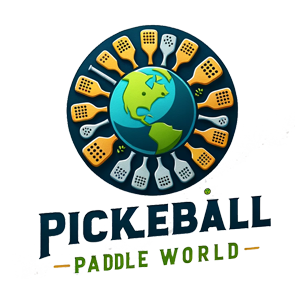
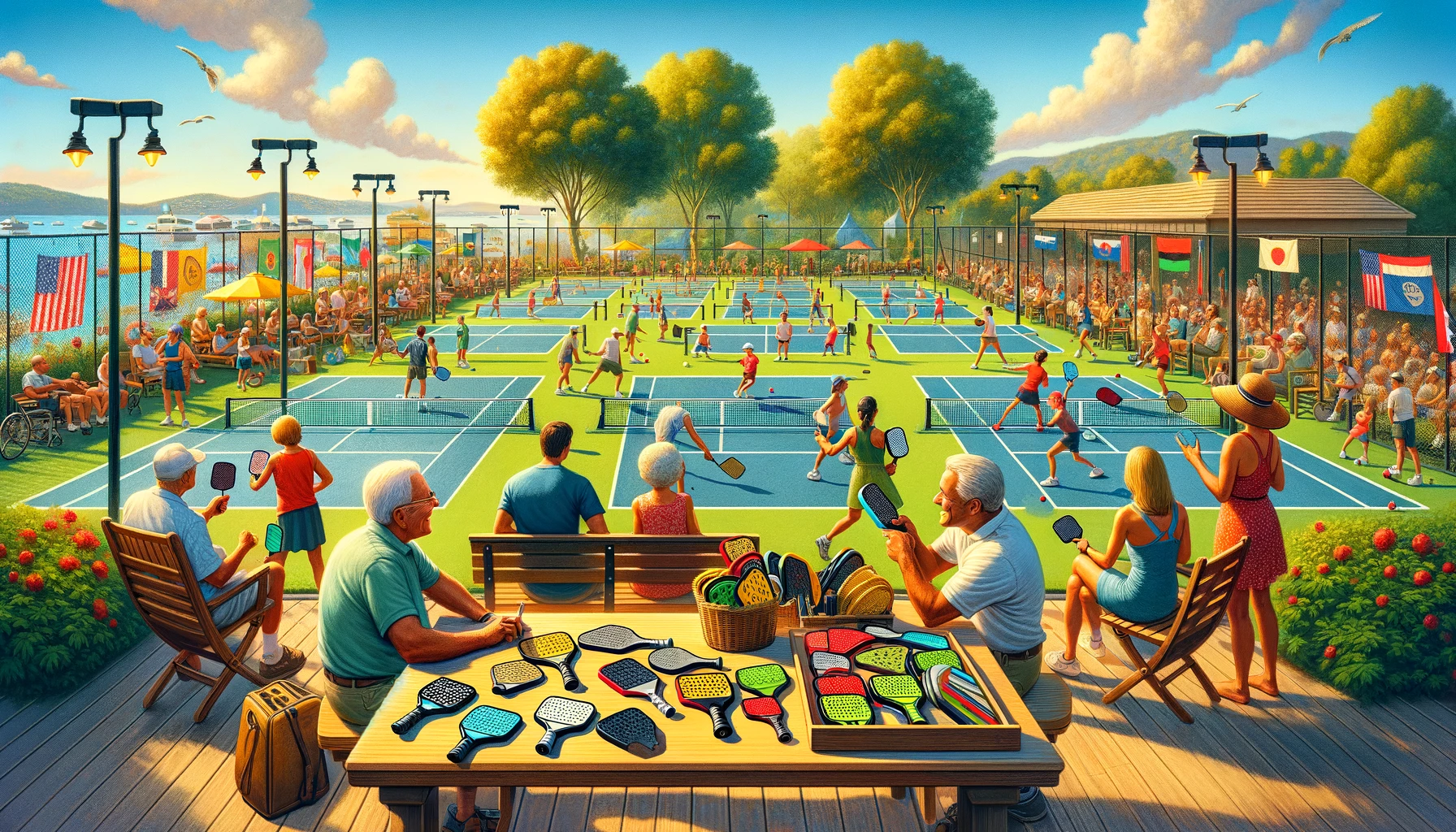
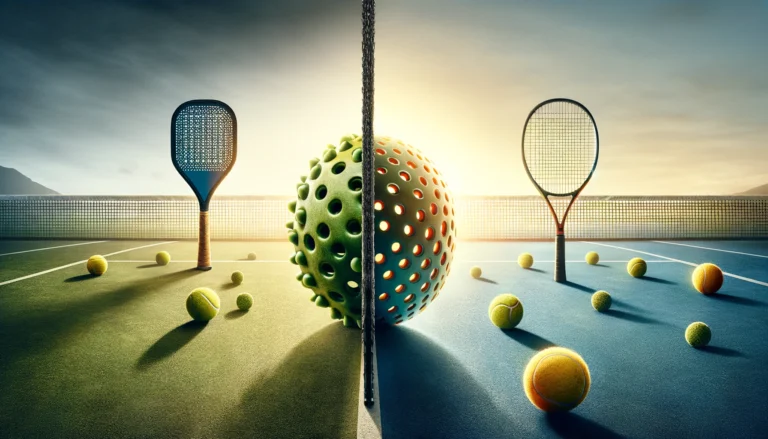
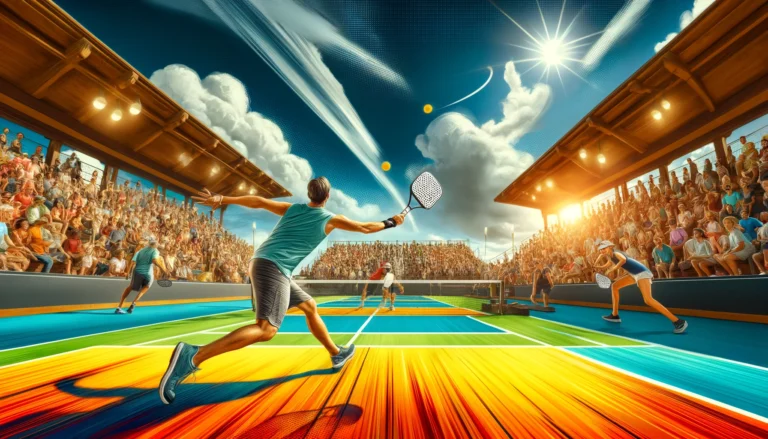
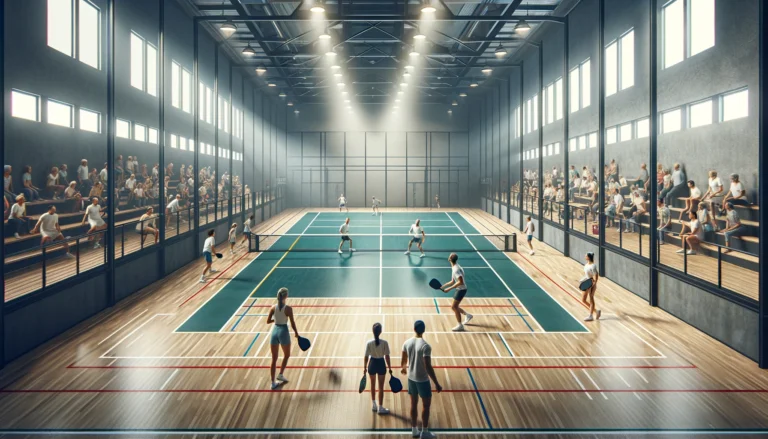

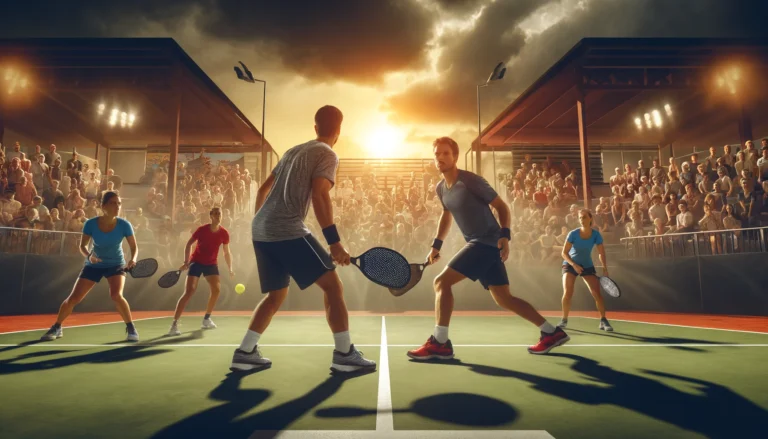
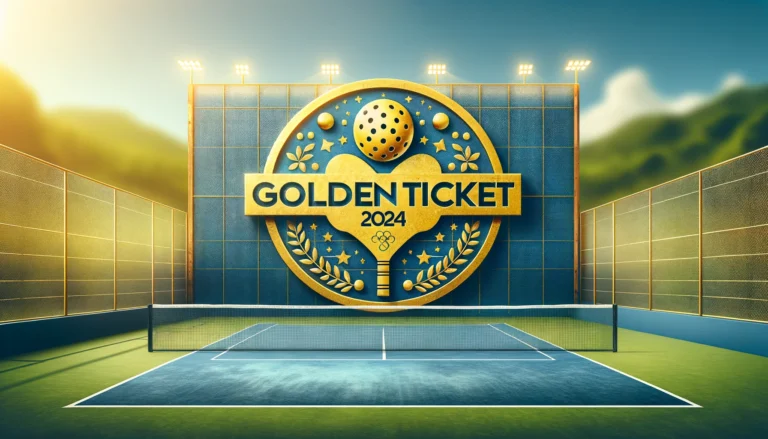
One Comment